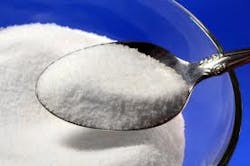Sugar Substitutes On The Rise
Chicago, November 18, 2015 — Sugar is now the top item consumers are trying to avoid in their diets and is neck-and-neck with calories as the top item they look for on nutrition facts labels, finds The NPD Group, a leading global information company. As a result of this avoidance, more sugar-free, unsweetened, or reduced sugar products are being consumed, and major foodservice distributors have increased case shipments of sugar substitutes to restaurants and foodservice outlets by double-digits over last year.
Case shipments of Stevia, a sweetener and sugar substitute extracted from the leaves of the plant species Stevia rebaudiana, to foodservice outlets increased by 11 percent, more than any other type of sugar substitute.
NPD’s Dieting Monitor, which continually examines top-of-mind dieting and nutrition-related issues facing consumers, asks adults the items they’re trying to cut down on or avoid completely in their diets. Fat has topped that list since the service was introduced in 2004. In 2014, for the first time, sugar narrowly edged out fats for the number-one spot on the list. About 65 percent of adults want to cut down on or avoid sugar completely in their diets compared to 63 percent who want to do the same with fat.
When asked what they usually look for on “Nutrition Facts” labels, calories and sugars are checked by 42 percent of adults. Sodium is noted by 37 percent of adults and fat by 34 percent, according to NPD. Regardless of the available nutritional information and dietary guidelines, consumers generally choose to focus on what they deem important.
Consumption of sugar-free, unsweetened, or reduced sugar products follows the trend in concern over sugar overall. Although all adult age groups express trying to avoid sugar in their diets, concern is highest among 55+ adults and this group also consumes the most sugar free, unsweetened and reduced sugar products than other adult age groups. Young children, under 6, consume the most sugar-free, unsweetened, or reduced sugar products among all age groups.
The growth in consumption of sugar-free products is also evident in the increase of case shipments of sugar substitutes from major broadline foodservice distributors to restaurants and foodservice outlets. Case shipments of bulk sugar substitutes to foodservice outlets increased by 22 percent in the year ending August 2015 compared to year ago, reports NPD’s SupplyTrack®, a monthly tracking service that tracks every product shipped from major broadline distributors to their foodservice operators.
